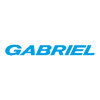OET
OET Interview Questions and Answers

Asked in Krishna Group

Q. What is DI? Please explain the DI.
DI stands for Data Interpretation, which involves analyzing and making sense of data to draw conclusions.
DI involves examining data sets, identifying patterns, and drawing conclusions.
It is commonly used in research, business analytics, and decision-making processes.
Examples of DI include analyzing sales data to identify trends, interpreting survey results to make recommendations, and evaluating financial reports to assess performance.

Asked in Action Tesa

Q. What is the difference between 2-stroke and 4-stroke engines?
2-stroke engines have a power stroke every revolution, while 4-stroke engines have a power stroke every other revolution.
2-stroke engines have a simpler design and are lighter than 4-stroke engines.
2-stroke engines are less fuel-efficient and produce more emissions than 4-stroke engines.
4-stroke engines are more reliable and have a longer lifespan than 2-stroke engines.
Examples of 2-stroke engines include chainsaws, dirt bikes, and outboard motors, while examples of 4-stroke ...read more
OET Interview Questions and Answers for Freshers

Asked in Krishna Group

Q. What is NDI? Please explain the NDI.
NDI stands for National Death Index, a centralized database of death record information in the United States.
NDI is maintained by the National Center for Health Statistics (NCHS).
It is used for research purposes to identify deaths in various studies.
Researchers can use NDI to track mortality rates, causes of death, and other vital statistics.
NDI helps in linking study participants to their death records for long-term follow-up.
Access to NDI is restricted and requires approval...read more
Asked in Krishnamurti Foundation India

Q. What is the future of OET?
OET is expected to grow in popularity and expand its reach globally.
OET is gaining recognition as a reliable and valid test of English proficiency for healthcare professionals.
The demand for healthcare professionals with strong English language skills is increasing worldwide.
OET is continuously updating its test materials and formats to meet the evolving needs of the healthcare industry.
OET is expanding its test locations and partnerships with healthcare organizations and edu...read more
Asked in Jonson Safety System

Q. What isi.c.engine
An internal combustion engine is a type of engine that generates power by burning fuel within a combustion chamber.
Uses fuel combustion to generate power
Commonly used in vehicles like cars, motorcycles, and trucks
Consists of cylinders, pistons, and a crankshaft
Types include gasoline engines and diesel engines

Asked in Bajaj Auto

Q. What is an engine?
An engine is a machine that converts fuel into motion, providing power to vehicles, machines, and other equipment.
Engines come in various types, such as internal combustion engines, steam engines, and electric motors.
They are used in cars, airplanes, boats, trains, and many other vehicles.
Engines are also used in power plants to generate electricity.
The efficiency of an engine is measured by its fuel consumption and power output.
Regular maintenance is required to keep engines...read more

Asked in MAHLE ANAND Filter Systems

Q. Explain the combustion cycle.
Combustion cycle is the process of burning fuel to produce energy.
Fuel is mixed with air and ignited
Heat is produced which causes expansion of gases
Expansion of gases creates pressure which moves pistons
Pistons turn crankshaft which produces power
Exhaust gases are released through the exhaust system

Asked in Incheon Motors

Q. Types of engines
There are various types of engines used in different applications.
Internal combustion engines (gasoline, diesel)
Jet engines (turbojet, turboprop, turbofan)
Steam engines
Electric motors
Hybrid engines
Rocket engines
Share interview questions and help millions of jobseekers 🌟


Asked in Keyence

Q. What is the definition of force?
Force is a vector quantity that causes an object to undergo a change in motion or shape, measured in Newtons.
Force is defined as mass times acceleration (F = ma). Example: A 10 kg object accelerating at 2 m/s² experiences a force of 20 N.
It can cause an object to start moving, stop moving, or change direction. Example: Pushing a stationary car to make it move.
Forces can be contact forces (like friction) or non-contact forces (like gravity). Example: Gravity pulls objects towa...read more
Interview Experiences of Popular Companies






Calculate your in-hand salary
Confused about how your in-hand salary is calculated? Enter your annual salary (CTC) and get your in-hand salary


Reviews
Interviews
Salaries
Users










